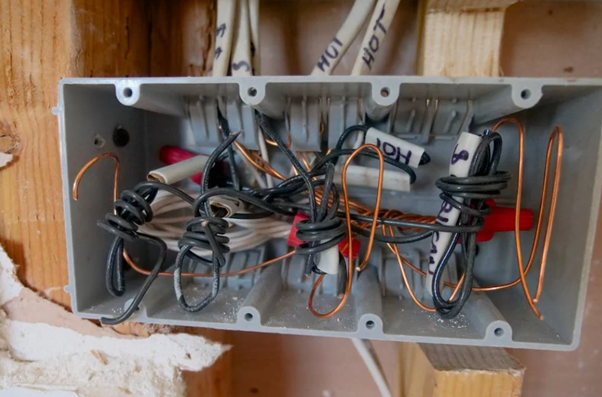How the Manufacturing Sector Can Continue Its Growth

Manufacturing isn’t merely in an upswing — it’s actually becoming more vital than ever to the health of national economies. The sector supported 12 million U.S. workers in 2018, for a total of almost 10 percent of the nation’s workforce.
Keeping up this momentum requires thoughtful and forward-thinking management, economics and politics. So let’s take a look at how it might be done.
Keep Manufacturing Jobs at Home to Boost Profitability
There is mounting evidence that making wiser investments in domestic facilities and talent can yield better long-term stability and growth than chasing after temporary savings through outsourcing. In a recent report, The Century Foundation makes a strong case that domestic investment is the key to expanding the U.S. manufacturing sector and helping it remain competitive with other global markets. Here are some of the takeaways of that report:
- Most products can be made profitably within national borders even with a well-paid workforce. This is because the technology involved ensures a very high level of output for each hour of human labour involved. The cost advantage of manufacturing a product in China, for example, versus domestically in the U.S., has shrunk to a paltry four percent and may soon be erased altogether.
- The manufacturing sector cannot expand its reach into areas where the “velocity of money” is low — that is, in areas where people don’t have money to put back into the economy. Among jobs which do not require a college education, manufacturing positions are some of the best-compensated, and therefore critical in maintaining economic vitality in parts of the country which are currently struggling to keep people employed and participating in the economy.
This body of research goes on to conclude that manufacturing companies achieve higher profits when they have less physical distance between the R&D process and the manufacturing process. Therefore, even if product research and development happens within national borders, those companies are leaving money and growth “on the table” if they do not also have domestic facilities and personnel to assemble them.
Invest in Selective Automation to Improve Efficiency
Robots haven’t taken all of our jobs and probably never will. But if the manufacturing sector wants to maintain its growth, it will need to contend with the ever-higher demands of a globalised economy and, depending on the region, potential labour shortages in certain sectors.
Consider computer numerical control (CNC) machining, which, despite having “computer” right in its name, still depends a great deal on human effort to move work pieces between machines, accurately place materials under lathes and routers, and transport goods between work stations and departments.
In an industry like this one, it’s becoming a no-brainer for sensor-laden pneumatic arms to perform some of the repetitive or delicate work, such as changing tools or even placing finished pieces in collection bins. Devices like these can operate in a wider variety of environmental conditions and in most cases can perform more precise work than a human worker.
Other opportunities for selective automation involve the automatic collection of mission-critical data, including IoT devices such as sensors. Collecting data throughout the manufacturing supply chain helps partners and vendors work together more harmoniously together and zero in on bottlenecks which threaten productivity and profitability.
Step Up Civic Participation and Support Programs That Reward Innovation
The policies of the current U.S. administration is starkly at odds with their stated goals. The slashing of regulations and government involvement in industry was an early and often-repeated promise of candidate (and now president) Trump. But that promise of unbridled innovation and economic progress, according to a consortium of high-tech companies, is under direct threat from the administration’s recent budget proposals.
The White House has proposed either dramatic cuts or the wholesale removal of several programs of major importance to U.S. manufacturing growth. These include the Manufacturing Extension Partnership, “Manufacturing USA,” as well as the DoE’s “ARPA-E” program. These programs, some of which have been around for 30 years, are allied to forward-thinking manufacturing and technology companies pursuing newer, cleaner and more efficient technologies. The Information Technology & Innovation Foundation finds that these cuts:
“…would undermine America’s long-term growth prospects by slashing investments that are critical to the country’s innovative capacity … especially when it comes to areas ranging from scientific and engineering research to workforce education and skills … congressional leaders should declare the proposal ‘dead on arrival.'”
If there’s a civic call to action here, it’s to revisit some of our conventional wisdom with respect to how “invisible” the “invisible hand” should be, as well as reshuffle our national priorities to in favour of planning for tomorrow instead of saving pennies today.
Grow the Industry by Growing Your Business
In closing, it’s worth remembering that some of the company-level activities we perform on a daily basis — or fail to — have lasting repercussions for the health of the industry as a whole. In the race for growth, it can be easy to forget the fundamentals, such as building a strong financial foundation, using lead management and customer reactivation strategies, and ensuring talent retention by hiring candidates who represent an excellent cultural fit.
Ultimately, as we’ve seen here, achieving lasting manufacturing sector growth requires strong public and private sector leadership and wise investments in people and technology alike. This is essentially what groups like the World Economic Forum Global Future Council exist to do. All that’s left to do is get your voice and talent in the mix.
Bio:
Emily Folk is a conservation and sustainability freelance writer. Check out her blog, Conservation Folks, or follow her on Twitter for the latest updates.















